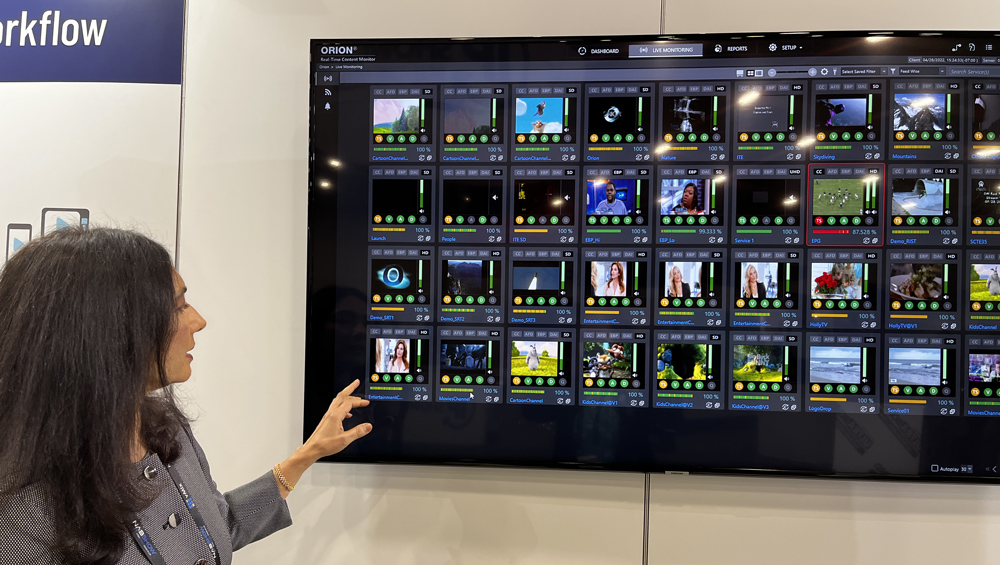
QOS And QOE Get Smarter As Monitoring Complexities Rise

Video quality equals ratings, and broadcasters are taking advantage of increasingly sophisticated ways to ensure viewers stick around to watch more content.
As video stream volumes increase and broadcasters fight to avoid losing viewers due to sub-par user experiences, vendors are evolving their services and solutions. Technologies like ATSC 3.0 pose some challenges around ensuring quality of service (QOS) and quality of experience (QOE).
And while “intelligent content” has become a buzzword, artificial intelligence (AI) continues to play an increasing role in QOS and QOE solutions. Finally, vendors aim to make their QOS and QOE offerings more valuable to broadcasters through features like data analysis and methods to track ad delivery.
Tracking Gets Harder
“It can be difficult for broadcasters to detect quality at the various points in the workflow to the end user or viewer,” says Ken Rubin, SVP at Actus Digital. But doing so is critical because “they quality they give out to their viewers has a direct relation to their ratings, which relates to earnings. If viewers are not happy, they change the channel.”
Audio cutting out can prompt a viewer to switch channels.
“The problem we solve is we identify the issue quickly so they can remedy it quickly,” Rubin says.
Peter Wharton, chief strategy officer at TAG, says it’s important to track the signal across all the points in the workflow and out to the edge.
“Customer churn is one of those things we want to fight. Once they leave, they may not come back,” Wharton says.
Tracking all those signals has become increasingly complicated due to the number of points and sheer volume of streams that must be monitored across the workflow and delivery chain.
And one way to monitor content is from the side of the viewer, according to VoiceInteraction CEO João P. Neto. VoiceInteraction’s solution collects and analyzes the signal “from the outside” to help broadcasters ensure a good experience, he says.
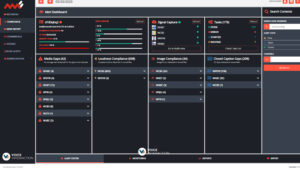
The alert center in Voice Interaction’s MMS-BE system.
According to Ralph Bachofen, VP for sales and marketing at Triveni Digital, QOS has had to evolve significantly to meet broadcaster’s needs.
“Way back when, it was wall about the video, but there’s more than just video now,” he says, citing the various types of audio along with metadata that must be monitored.
And broadcasters have expanded the scope of how they use QOS and QOE services, Qligent CEO Brick Eksten says.
“Nobody’s stream is perfect,” he says.
ATSC 3.0 Challenges
In the past, broadcasters used QOS and QOE services for compliance and managing services, but with the advent of ATSC 3.0, broadcasters are more focused than ever on how their data moves along the purely digital pipeline, he says.
With ATSC 3.0 part of the question is about the accuracy of the content and the services that are running, Eksten says.
ATSC 3.0 “looks a lot like OTT when you look at how the data moves” to the viewer, he says. “The question becomes, ‘Where’s this data coming from and what’s the resulting picture look like?’”
Broadcasters are starting to send out ATSC 3.0 content in different markets.
As Mediaproxy CEO Erik Otto puts it: “ATSC 3.0 is becoming a little more real.”
But that means those signals have to be monitored.
Broadcasters are “trying to get their head” around how to monitor that content pipeline, he says.
As Triveni’s Bachofen says, clients need to ensure their ATSC 3.0 QOS is “at least as good as or better” than the ATSC 1.0 quality, and that they need to ensure the quality of both streams concurrently.
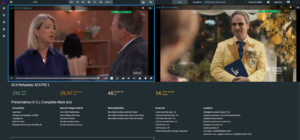
Screenshot of Vela’s Infinity, which won NAB 2022 Product of the Year, shows ATSC 3.0 video along with the AC-4 Metadata.
Ric Belding, senior director of sales engineering and strategy at Vela, says many are uncertain what regulatory standards will be for compliance when it comes to ATSC 3.0.
That is causing some potential customers “hold off until they know more” about compliance regulations and QOS-QOE solution for 3.0, he says.
“They still need a good signal with high-quality video and high-quality audio,” he says. “Even though there are not a lot of compliance standards out there for 3.0, tools like ours will help them.”
Monitoring At Different Workflow Points
Anupama Anantharaman, VP of product management at Interra Systems, says customers want to monitor quality at different points in the workflow. This is important, she says, because content at ingest may be a certain level of quality but that quality might degrade during processing. Checking quality at multiple points in the workflow makes it possible to address quality degradation earlier, she says.
And it’s also important to trace service quality through the entire delivery chain, she says. But just collecting data from a probe is not enough.
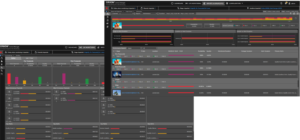
Interra Systems’ Orion Central Manager shows service quality being traced across the delivery chain.
“What you really need is intelligent problem correlation. If there is a problem, this is where it is, what the problem is, where it originated, so we can troubleshoot it faster,” Anantharaman says. “You not only need data, but smart monitoring so you have the necessary intelligence to figure things out.”
And Interra’s solution offers that, she says.
One of the things Interra is working on is improving quality monitoring through machine learning, she adds.
Metadata’s Usefulness
Something Digital Nirvana has focused on is intelligent content, or having metadata associated with content to make it findable and actionable, Russell Wise, SVP for sales and marketing at Digital Nirvana, says. Real-time transcription for all incoming feeds makes it possible to easily find content, he says. An application of that relates to QOE, he says, because broadcasters want to be able to access classified and summarized content to assist with ad placement.
Right now, he says, humans have to look at it to determine whether an ad can be used, as some advertisers may not want their ads to be placed next to content involving alcohol, nudity or other types of content.
“That’s a theme we’re hearing,” he says. “The driving issue is ‘How do I know what content I’m putting out there and know what it’s going in?’”
Improving User Friendliness
Tedial’s smartWork QOS-QOE solution reflects a new approach the company has taken in the past couple of years.
Tedial CTO Julian Fernandez-Campon says the no-code architecture enables “even people who don’t have technical skills” to work with the tool. “We offer something which is future-proofed,” he says. “We take the complexity on ourselves and make it easy for the user.”
Tedial built smartWork as something that could be cloud native, cloud independent or on-prem, Fernandez-Campon says. One project has already been delivered, while another was being implemented and one was waiting for hardware in late April.
Wharton says data-driven QOS and QOE solutions are instrumental in helping broadcasters uncover what’s happening with signals in their workflows and allow them to make “intelligent decisions” based on issues that may arise.
TAG’s system uses open-source technology to expose that data, he says, adding its use of adaptive monitoring reduces the cost of monitoring. The system uses penalty boxes to flag attention about a problem in real time.
“It’s not good enough to just be monitoring. You need to know what’s happening” in real time, not by a text message half an hour later, he says.
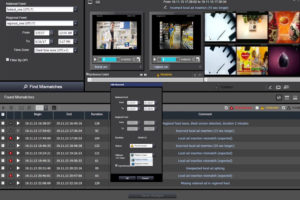
Qligent says its Match technology helps users manage increasingly complex media supply chains. Match provides an auditable accounting of the customer’s content delivery.
TAG introduced TAG Bridge technology during the NAB Show in April, which allows a customer to input a signal once and monitor it “anywhere, even across continents and cloud regions and between the cloud and ground” with ultra-low latency suitable for live sports production, he says.
Expanding Features
VoiceInteraction’s Neto says QOS and QOE tools originated for compliance and recording purposes but now offer many other features.
“The system was used by engineering for quality only, but now it’s exploited by different departments” who use different feature sets, he says. For example, broadcasters can “extract a lot of information” from a Voice Interaction QOS-QOE tool that offers analysis of a station’s competition.
“We can analyze what you are doing with your channel,” he says. “But also, we are analyzing other channels competing in the same market.”
That analysis can include what commercials each is playing, and it can integrate Nielsen ratings, he says. “It’s not only the quality of the signal, but of the content of the information you are providing.”
Bringing Monitoring Closer To Consumer
Wise says one of the driving trends for quality monitoring has been pushing the monitoring aspect further to the edge and closer to the consumer. In the past, monitoring QOE that close to the consumer was more expensive, he says.
“The prices of those devices have gone down,” which makes that type of monitoring economically feasible, he says. And that makes it feasible to track ad delivery, he adds.
One of Digital Nirvana’s customers is using its probe in 600 ad zones in the U.S. to confirm personalized — and high-quality — ads were delivered to specific consumers, rather than using the “send it and pray” model of ad delivery, he says.
“That’s where the money resides,” Wise says. “Not just delivery of the signal but is the ad in there.”
Digital Nirvana’s tool can make sure ads were delivered, he says, and “if questions about the quality of the ad, they can have a recording to show the ad really went there.”



































Comments (0)